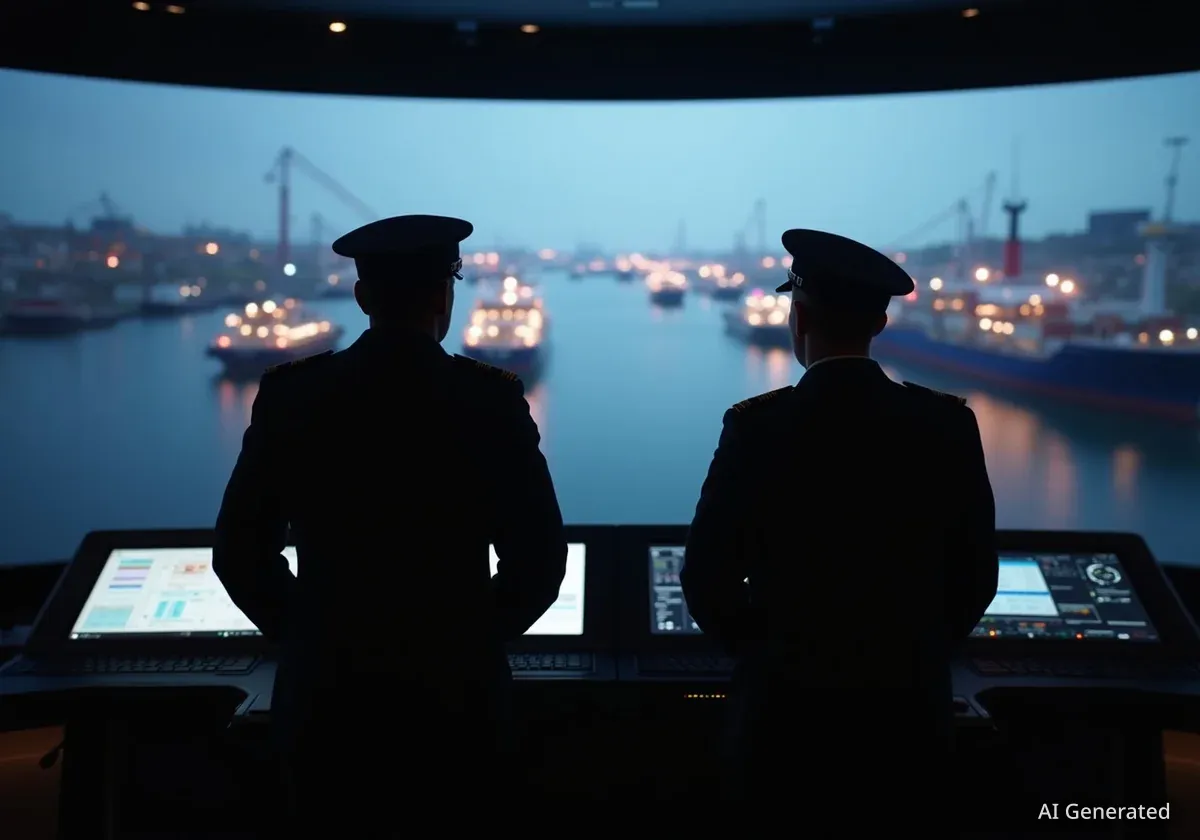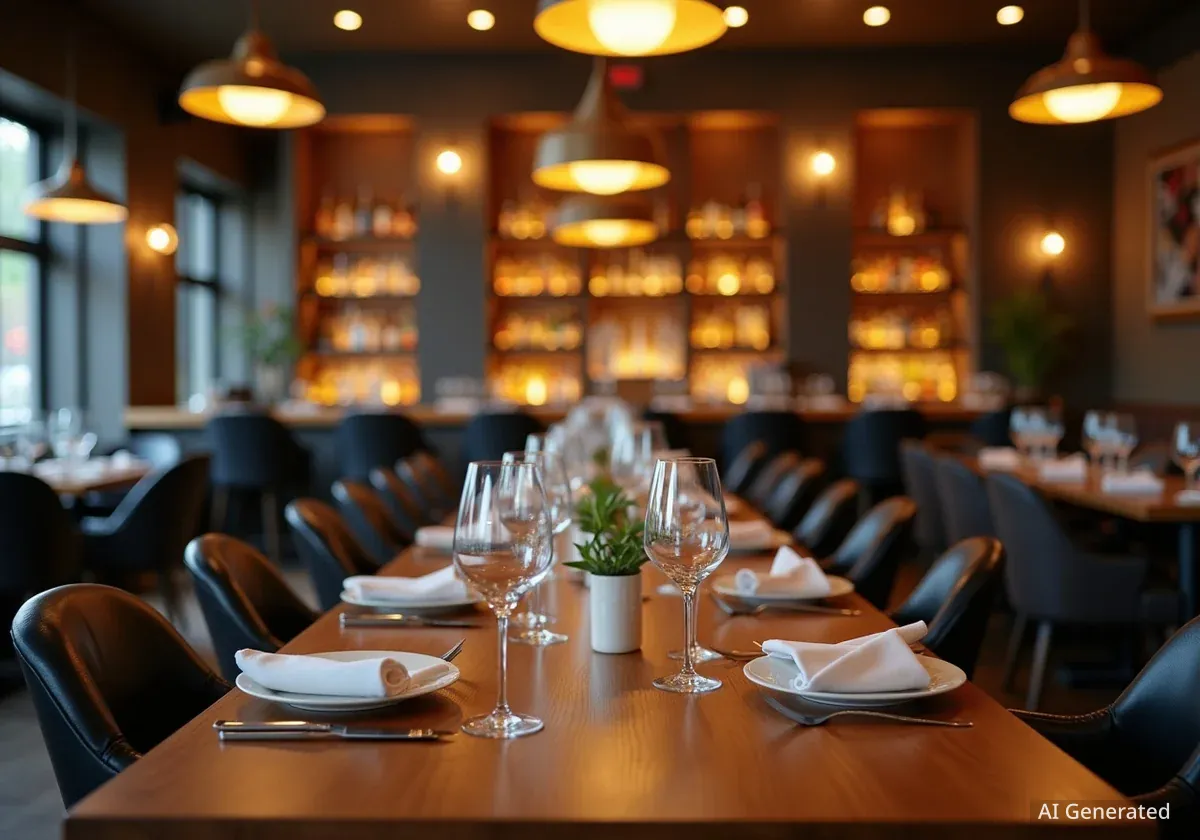Liverpool City Region Mayor Steve Rotheram has tested a state-of-the-art maritime simulator being used to train captains for the first new Mersey Ferry in over 60 years. The training at Liverpool John Moores University (LJMU) prepares staff for the advanced propulsion system of the £26 million vessel, the Royal Daffodil, which is set to launch next year.
Key Takeaways
- Mersey Ferry captains are using a high-tech simulator at LJMU to prepare for the new £26m Royal Daffodil ferry.
- The new vessel, built at Cammell Laird, features an advanced Azipod propulsion system, a significant upgrade from the current 60-year-old technology.
- Mayor Steve Rotheram visited the facility to experience the simulator and meet the crew undergoing training.
- The training is part of a wider plan to modernise the Mersey Ferries service, including major upgrades to the Seacombe and Woodside terminals.
A New Era for Mersey Ferries
The introduction of the Royal Daffodil marks a significant milestone for the iconic Mersey Ferries service. The vessel, currently under construction at the Cammell Laird shipyard in Birkenhead, is the first new ferry commissioned for the service in more than six decades.
With an investment of £26 million, the new ferry is designed to be cleaner and more efficient. It represents a major step forward in modernising the fleet, which has served generations of commuters and tourists. The vessel is scheduled to enter service in 2026.
Mayor of the Liverpool City Region, Steve Rotheram, highlighted the cultural and historical importance of the ferries while emphasising the need for evolution.
"The late, great, Gerry Marsden immortalised the ‘ferry ‘cross the Mersey’ and they’re a part of who we are. They’ve carried generations of people across the river, to work, to gigs, to games and back home again. But just like our region, they’re evolving."
Advanced Simulator Training at LJMU
To prepare for the new vessel, captains are undergoing intensive training at Liverpool John Moores University's advanced maritime simulator. This cutting-edge facility allows the crew to familiarise themselves with the new technology in a safe and controlled environment.
The simulator recreates a highly realistic digital version of the River Mersey, enabling captains to practice a wide range of scenarios. These include emergency stops, precision docking in various weather conditions, and navigating tight manoeuvres specific to the river's unique challenges.
Mayor Rotheram visited the university to meet the captains and personally test the simulator, gaining hands-on experience with the new control systems. His visit underscored the importance of the training in ensuring a smooth transition to the new vessel.
Practical Experience Beyond the Simulator
In addition to simulator training, Mersey Ferries captains are also gaining practical experience on Lake Windermere. The ferries operating there already use a comparable hybrid-ready engine system, providing valuable real-world practice with the new technology ahead of the Royal Daffodil's launch.
The Technology Behind the Royal Daffodil
The most significant change for the captains is the new Azipod propulsion system. This technology is a major departure from the traditional propulsion systems used on the current ferries, which are over 60 years old.
The existing system requires manual engagement and throttle management for turning and manoeuvring. In contrast, the Azipod system provides automated control, which enhances safety and improves navigational efficiency. This allows for more precise movements and better handling, particularly when docking.
Old vs. New Propulsion Systems
- Current Ferries (60+ years old): Rely on traditional propellers and rudders with manual throttle and engagement for steering.
- Royal Daffodil (New): Uses an Azipod system where the propeller is in a pod that can rotate 360 degrees, offering superior manoeuvrability and automated control.
Despite the technological leap, the traditional skills of ferry operation will not be lost. The captains will continue to operate both the new and existing vessels, ensuring the team remains one of the most adaptable and experienced in the UK maritime sector.
"The Royal Daffodil is the next chapter in that story – cleaner, greener, and built right here on the banks of the Mersey. It’s a real symbol of the pride, innovation and graft that make our area special," Mayor Rotheram added. "Seeing our captains mastering this new technology shows that, while the kit might be cutting-edge, the spirit of the Ferries remains exactly the same.”
Modernising the Full Ferry Experience
The new vessel is part of a broader masterplan to safeguard and enhance the entire Mersey Ferries experience. This includes significant investment in the infrastructure that supports the service.
In 2024, major upgrades to the Seacombe ferry terminal in Wirral were successfully completed. These improvements have modernised the facility and improved the passenger experience.
The next phase of the plan involves the transformation of the Woodside ferry terminal. These terminal upgrades are key milestones in ensuring the long-term future of the iconic service, making it more reliable and attractive for both daily commuters and visitors to the region.





